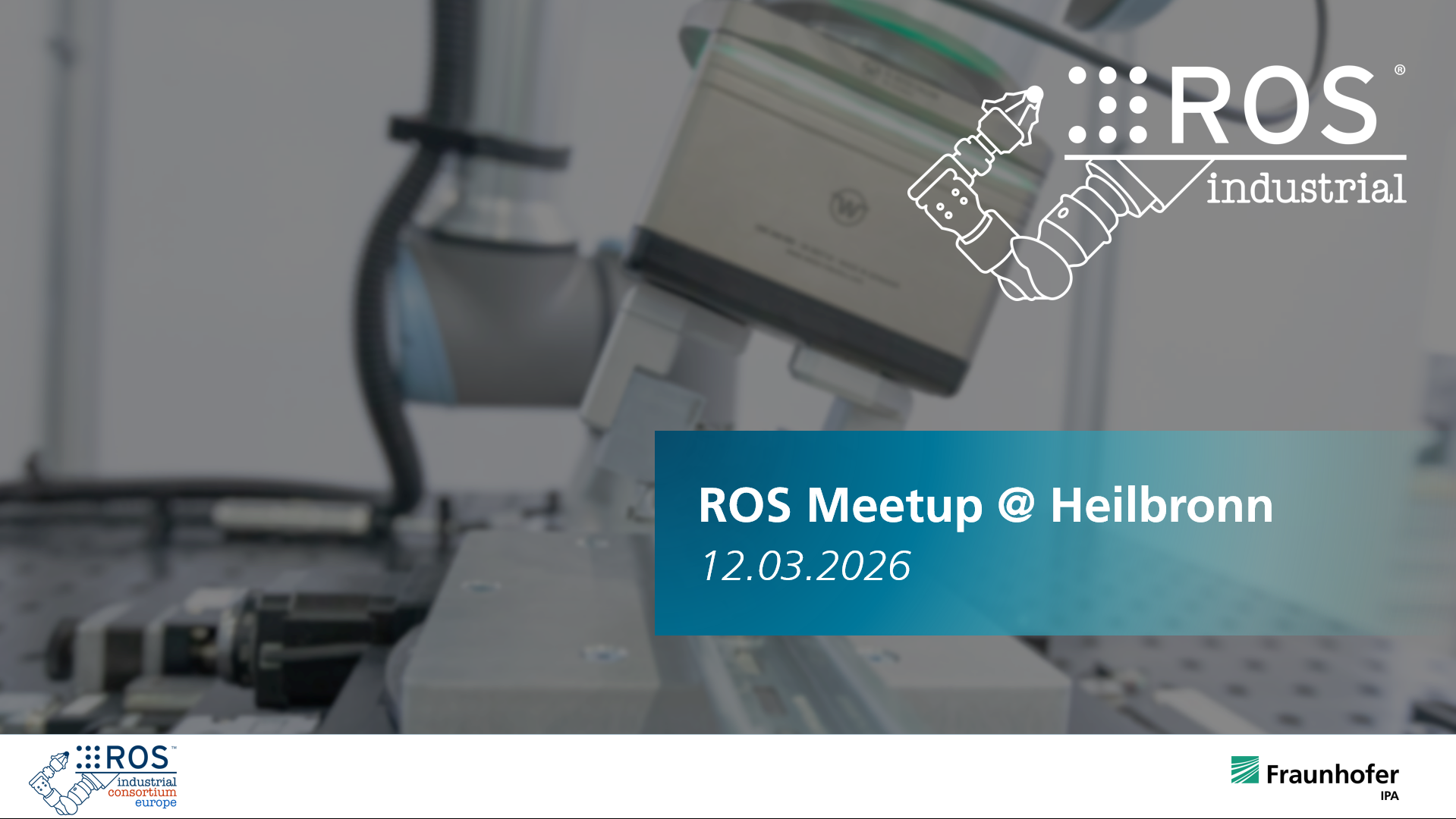The Challenge
Even with all the advancement and evolution of ROS, to ROS 2, and the engagement with a number of exciting new start ups, universities, and funding entities, there still remain challenges in getting scalable, leverageable foundational technical capabilities into the hands of robotics researchers, application developers and the end users that have a real need for innovative robotic solutions.
There still is a need for foundational, freely available to use and edit, reliable and well documented software that enable capabilites that enable more efficient tech transfer and a greater set of community participation in developing solutiosn for industry. ROS-Industrial seeks to enable research advancements from the lab and transition, in a comprehensive way, for use with industrial robotics and automation.
ROS-Industrial is only the first step in establishing a community for development of advanced robotics capabilities for industry. The success of ROS-I critically depends on broad community involvement from end users, accessory manufacturers, robot manufacturers, integrators, researchers, educators, and government to prioritize new ROS-Industrial capabilities and application templates. There are software development, standards development, documentation, technical support, and training activities necessary to deploy ROS-Industrial broadly and in robust applications.
Industry collaboration to solve common problems is a natural way to address the need, wherein participants share the development cost and benefit from community ideas and involvement. Following other successful open source projects as models, SwRI initiated the first precompetitive commercial collaborative research consortium, exclusively focused on the needs of industrial robot users, called the ROS-Industrial Consortium (RIC) Americas. The RIC also enables collaboration through the sister consortia that are led by Fraunhofer IPA, RIC – European Union, and the Advanced Remanufacturing and Technology Centre in Singapore, RIC – Asia-Pacific. The RIC will accelerate the further development of ROS-Industrial. Members will work together to develop an application roadmap for ROS-Industrial, set near-term technical goals, and participate in spinoff Focused Technical Projects (FTPs). The current high-level Vision, below, is presented to illustrate the ROS-Industrial capability and a qualitative timeline for development.
Vision
Create an open community and common software repository where researchers, robotics professionals, and industrial controls experts can contribute robust and reliable manufacturing-related ROS software, combining the relative strengths of ROS and existing technologies (i.e. combining ROS high-level functionality with the low-level reliability and safety of industrial robot controllers). Over time ROS-Industrial will be positioned to become the leader, and standard, in advanced robotics software by presenting a new way to solve complex challenges through the democratization of tools and capabilities, thus driving end-user value through new capability leverage, and solution provider value by focusing on the new capability creation versus recreation of interfaces and building blocks.
Mission
The mission of the Consortia are to accelerate the development of ROS-Industrial by:
- Managing a roadmap to identify and prioritize ROS-Industrial capabilities for industrial robotics and automation as defined by the user community to address its current and future applications problems.
- Instituting and enforcing code quality standards appropriate for an industrial software product. These include rating/tracking code quality metrics, multi-level testing and documentation.
- Providing a wide range of user services, including technical support and training, to facilitate the continued adoption of ROS-Industrial by industry.
- Providing a mechanism for formal marketing and distribution of the code to a wider audience, thereby further expanding the user community, and providing greater capabilities.

